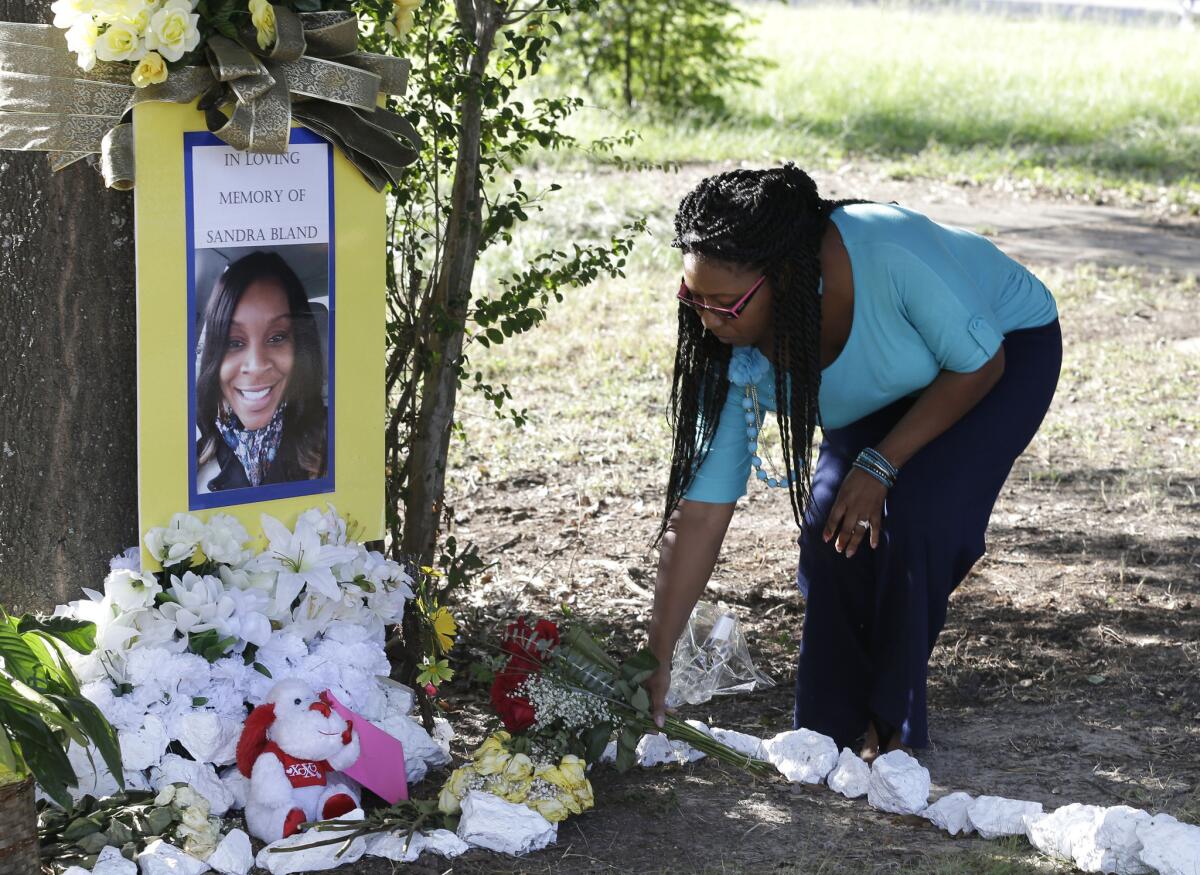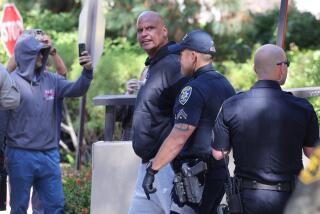Suspicion over ‘glitches’ in Sandra Bland arrest video shouldn’t surprise us

Jeanette Williams places a bouquet of roses at a memorial for Sandra Bland near Prairie View, Texas, on July 21. A newly released dash-cam video documents how a routine traffic stop escalated into a confrontation between a Texas state trooper and Bland, which led to her arrest. Bland was found hanging in her jail cell three days later.
On Tuesday, Ben Norton, a freelance journalist based in New York, watched the dash-cam footage of the arrest of Sandra Bland on his computer. He had reported on Black Lives Matter activists in the past, and the story of Bland concerned him.
But like many others, he noticed that something about the footage seemed strange. At 7 p.m., Ben Norton published a post on his blog that detailed what he thought was evidence that the footage had been doctored.
At one point, the footage seemed to loop as the same car repeatedly drove by and then disappeared. In another, a man repeatedly appears and disappears as he exits a vehicle.
An hour later, “Selma” director Ava DuVernay linked to Norton’s post, tweeting: “I edit footage for a living. But anyone can see that this official video has been cut…. Why?”
Soon the post had gone viral, and social media was full of speculation about why the Texas Department of Public Safety would release footage that appeared to have been edited.
“These could be glitches,” Norton said in an interview late Tuesday night. “But this looks edited to me. I’m not sure, but maybe there was video that they didn’t want to show people, so they cut and pasted other parts. It’s extremely suspicious.”
On Wednesday morning, Texas officials said the video had not been edited and the graphical anomalies were due to technical issues during the upload. They said they had resolved the issues and uploaded a new video. The old one was deleted from YouTube.
The scrutiny surrounding the video should come as no surprise.
Over the last two years, social media has become home to a community of citizen detectives and reporters. They do not trust official police accounts, nor do they trust established media sources. They demand the public release of all possible evidence, as they prefer to sift through the raw data – documents, video and audio – themselves.
Last year, Ferguson police said Michael Brown posed a danger to Officer Darren Wilson when he was shot 35 feet away from him. But writer and activist Shaun King published a widely read and shared post that used his own analysis of press footage, witness statements and Google Maps screenshots to argue that Michael Brown was at least 148 feet away when he was shot. This, King said, suggested that Wilson was not in danger when he shot Brown.
His evaluation was never acknowledged by authorities, but many who read his blog found his presentation compelling.
Activists in Baltimore and on social media were immediately suspicious after the death of Freddie Gray, whose spine was nearly severed and who had been transported in a police van. For weeks they intensely reviewed bystander videos and official accounts of the episode.
Their suspicions were bolstered when hours after a medical examiner declared Gray’s death a homicide, State Atty. Marilyn J. Mosby brought criminal charges against the six officers involved in his arrest and transport.
The new dash-cam footage of Bland’s arrest appears to be glitch-free, but the scrutiny has not stopped. Ben Norton updated his post Wednesday with more doubts: police videos usually have timecode in the footage, he said, but this dash-cam footage has none.
As discussion over the video continues, Texas authorities can be sure of one thing: The Internet is watching their every move.
Follow me @dexdigi for more on culture and the Internet
More to Read
Sign up for Essential California
The most important California stories and recommendations in your inbox every morning.
You may occasionally receive promotional content from the Los Angeles Times.











